
Tantilla is a large genus of harmless New World snakes in the family Colubridae. The genus includes 65 species, which are commonly known as centipede snakes, blackhead snakes, and flathead snakes.
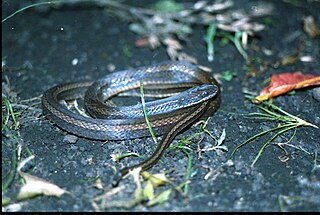
Coniophanes is a genus of colubrid snakes, commonly referred to as black-striped snakes, but they also have many other common names. The genus consists of 17 species, and despite the common name, not all of them display striping.

Ficimia is a genus of colubrid snakes commonly known as hooknose snakes or hook-nosed snakes, which are endemic to North America. There are seven species within the genus.

Oxybelis is a genus of colubrid snakes, endemic to the Americas, which are commonly known as vine snakes. Though similar in appearance to the Asian species of vine snakes of the genus Ahaetulla, they are not closely related, and are an example of convergent evolution.

Gyalopion canum, commonly known as the Western hooknose snake, is a species of small colubrid snake endemic to the deserts of the United States and Mexico. It is sometimes referred to as the Chihuahuan hook-nosed snake because it is commonly found in the Chihuahuan Desert.
The Saint Croix racer is a species of snake in the family Colubridae. The species is endemic to Saint Croix, United States Virgin Islands.

Adelophis copei, Cope's mountain meadow snake, is a vulnerable species of snake in the family Colubridae. The species was originally described by Alfredo Dugès in 1897, and is endemic to Mexico. It is the type species of the genus AdelophisDugès, 1879.

Geophis sanniolus, commonly known as the pygmy snail-eating snake or the pygmy snail sucker, is a species of small snake in the family Colubridae. The species is endemic to Central America and southeastern Mexico.
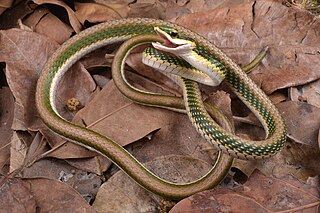
Leptophis mexicanus, commonly known as the Mexican parrot snake, is a species of medium-sized slender snake in the family Colubridae. The species is endemic to the Americas.
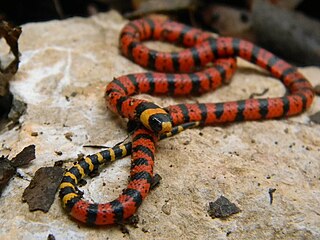
Micrurus diastema, commonly known as the variable coral snake, is a species of venomous snake in the family Elapidae. The species is endemic to southeastern Mexico and northern Central America. There are seven recognized subspecies.
The rustyhead snake, also known commonly as the rufous-headed snake, is a species of snake in the family Colubridae. The species is endemic to Central America and Colombia.
The West Coast garter snake is a species of snake in the family Colubridae. The species is endemic to Mexico. Four subspecies are recognized.
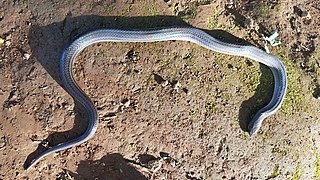
Stenorrhina is a genus of snakes in the family Colubridae.
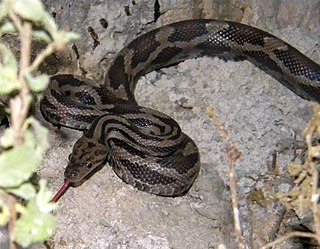
The yellow-red rat snake is a species of snake in the family Colubridae. The species is endemic to Mexico and Central America. Three subspecies are recognized.
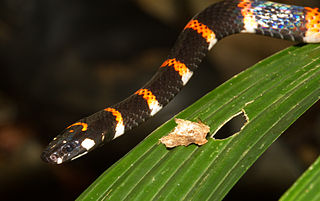
Pliocercus euryzonus, commonly known as Cope's false coral snake or the black halloween snake , is a species of snake in the subfamily Dipsadinae of the family Colubridae. The species is indigenous to southeastern Central America and northwestern South America. There are two recognized subspecies.

Symphimus is a genus of snakes in the family Colubridae. The genus is endemic to Mexico and Central America.

Cemophora is a genus of snakes in the family Colubridae. The genus contains two species, which are endemic to the United States.
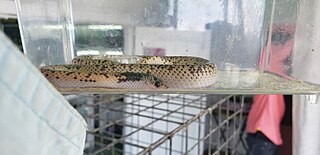
Phimophis guianensis, also known commonly as Troschel's Pampas snake, is a species of snake in the subfamily Dipsadinae of the family Colubridae. The species is endemic to South America.

Stenorrhina degenhardtii, also known by its common name Degenhardt's scorpion-eating snake, is a species of snake in the family Colubridae. The species is native to southeastern Mexico, Central America, and northwestern South America. There are three recognized subspecies.
The rusty-headed snake is a species of snake in the family Colubridae. The species is found in Honduras, Guatemala, Mexico, and Belize.















